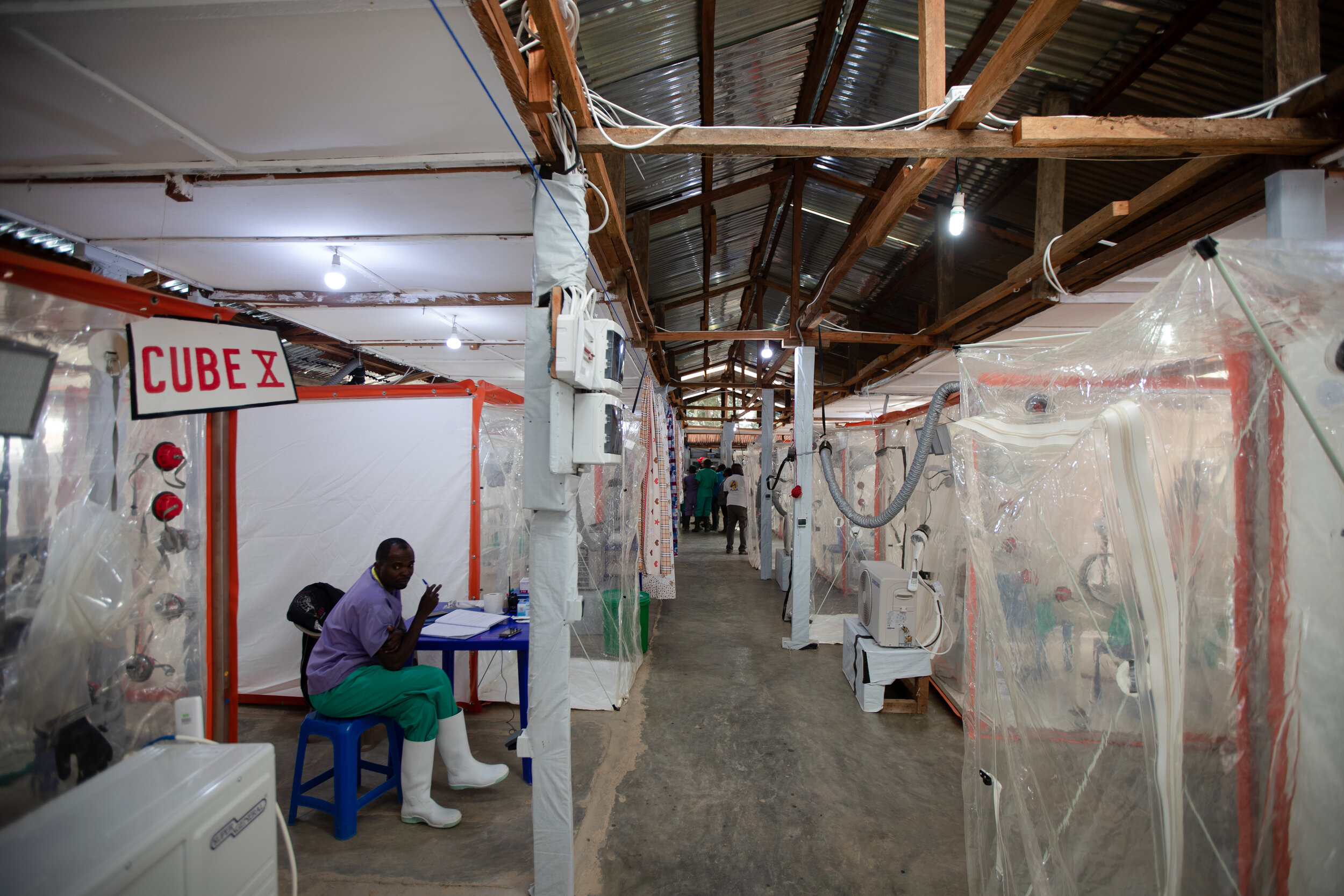
at Katwa Ebola treatment centres where ALIMA NGO took over after two Ebola Treatment Centres belonging to Doctors Without Borders were burnt down by rebels who mistrust the government and the NGOs. Katwa, DRC, 2019

a family visit to Silvie, a 10 years old Ebola patient who lost her mother to Ebola and had been in the CUBE “the Biosecure Emergency Care Units for Epidemics” receiving her treatment. Katwa, DRC, 2019
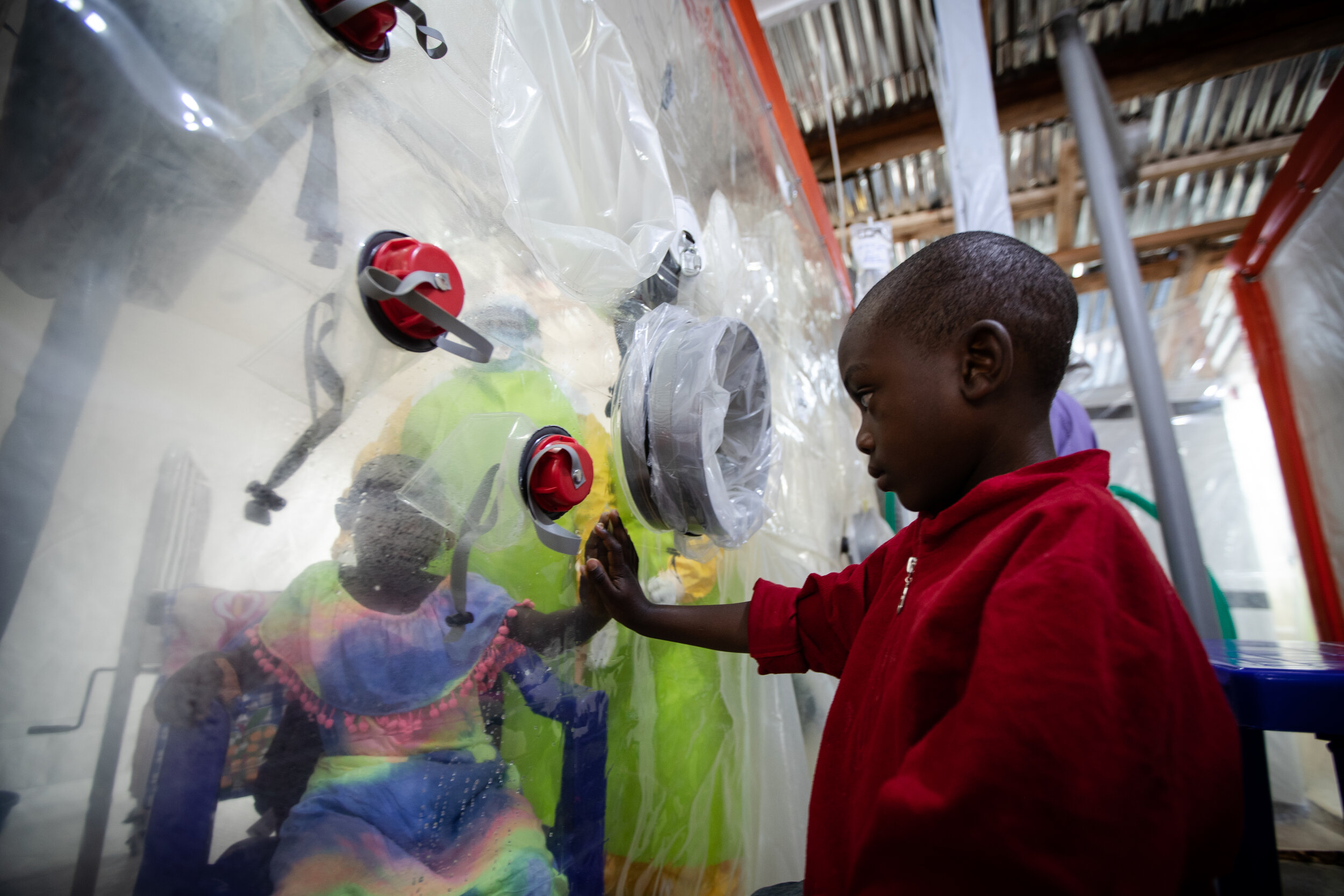
Gabriel, Silvie’s brother, comes to visit his sister every day - she used to take care of him and their younger brother after their mother passed away. he said that he enjoyed communicating with her by talking to her and feeling the warmth of her hand on the surface of CUBE. Katwa, DRC, 2019
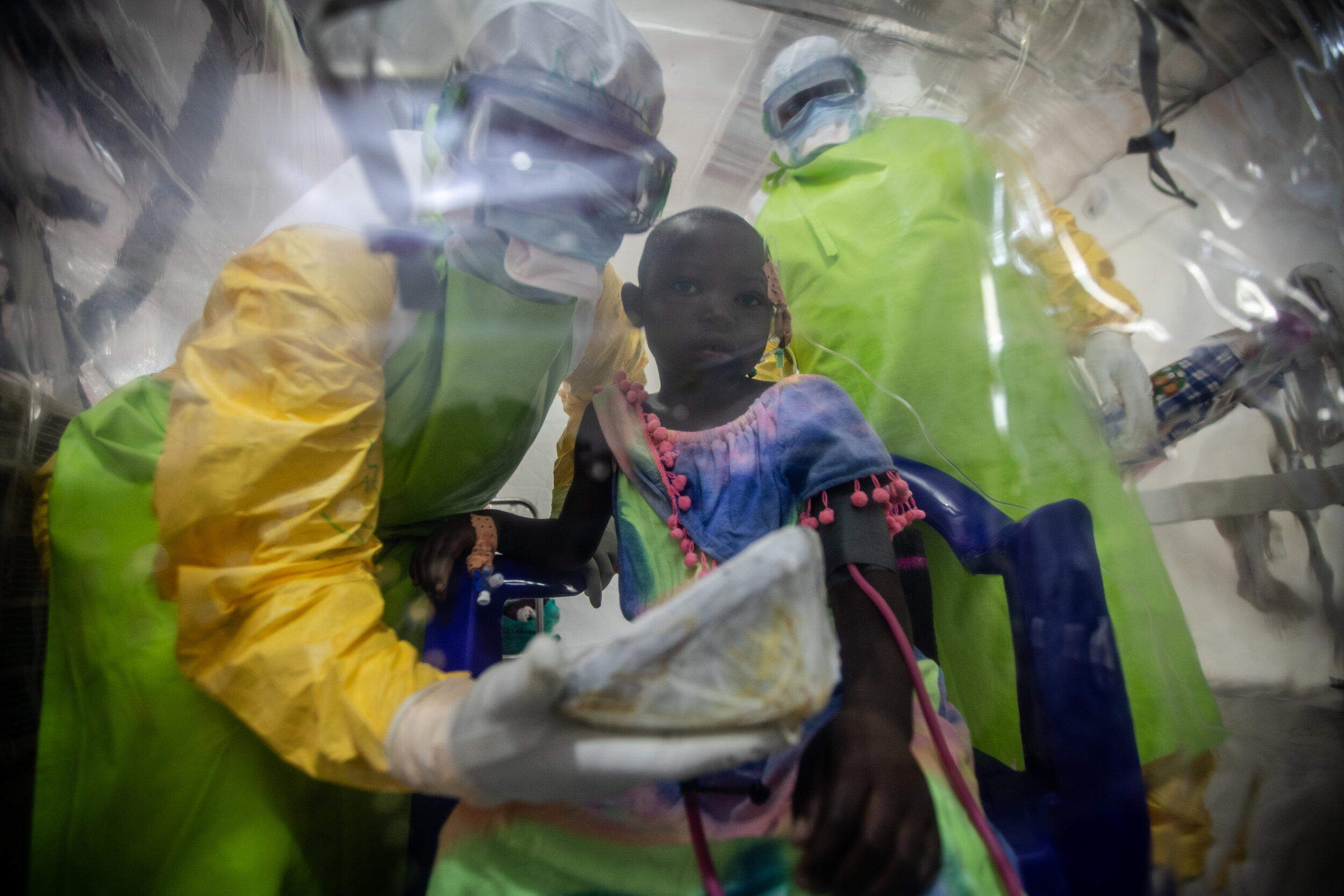
10 years old Silvie. because of the innovation of the CUBE, the family members can visit the patient, see them and communicate with them through the transparent surface, which makes the patient feel less isolated. Katwa Ebola treatment center, The Democratic Republic of Congo, 2019
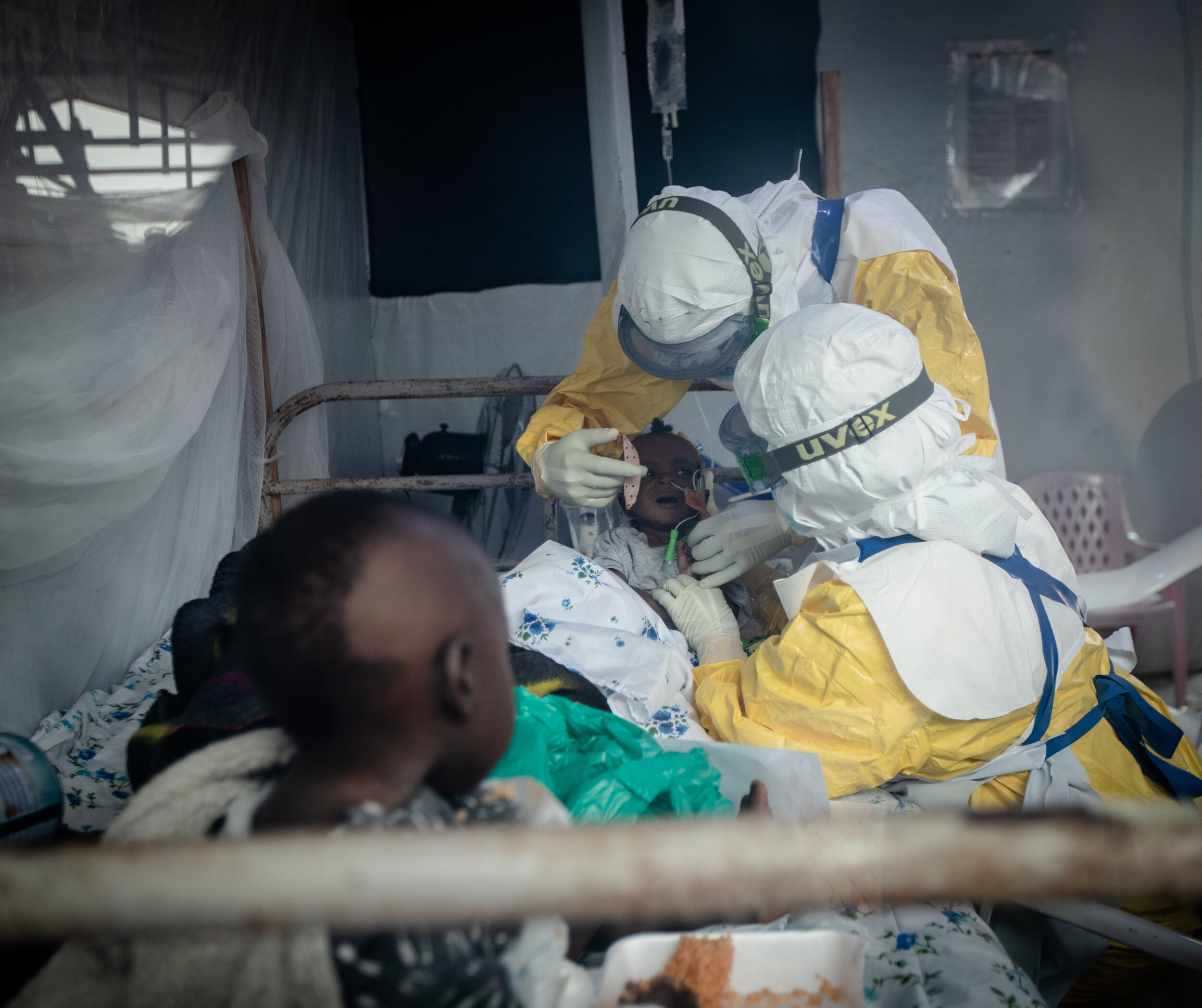
at the Beni Ebola treatment center which, Dr. Richard Kojan, the president of ALIMA, considers to be “the school for Ebola”. there, ALIMA had installed the first treatment centres in August 2018 - that’s when the Ebola Epidemic reached that area. Beni, The Democratic Republic of Congo, 2019
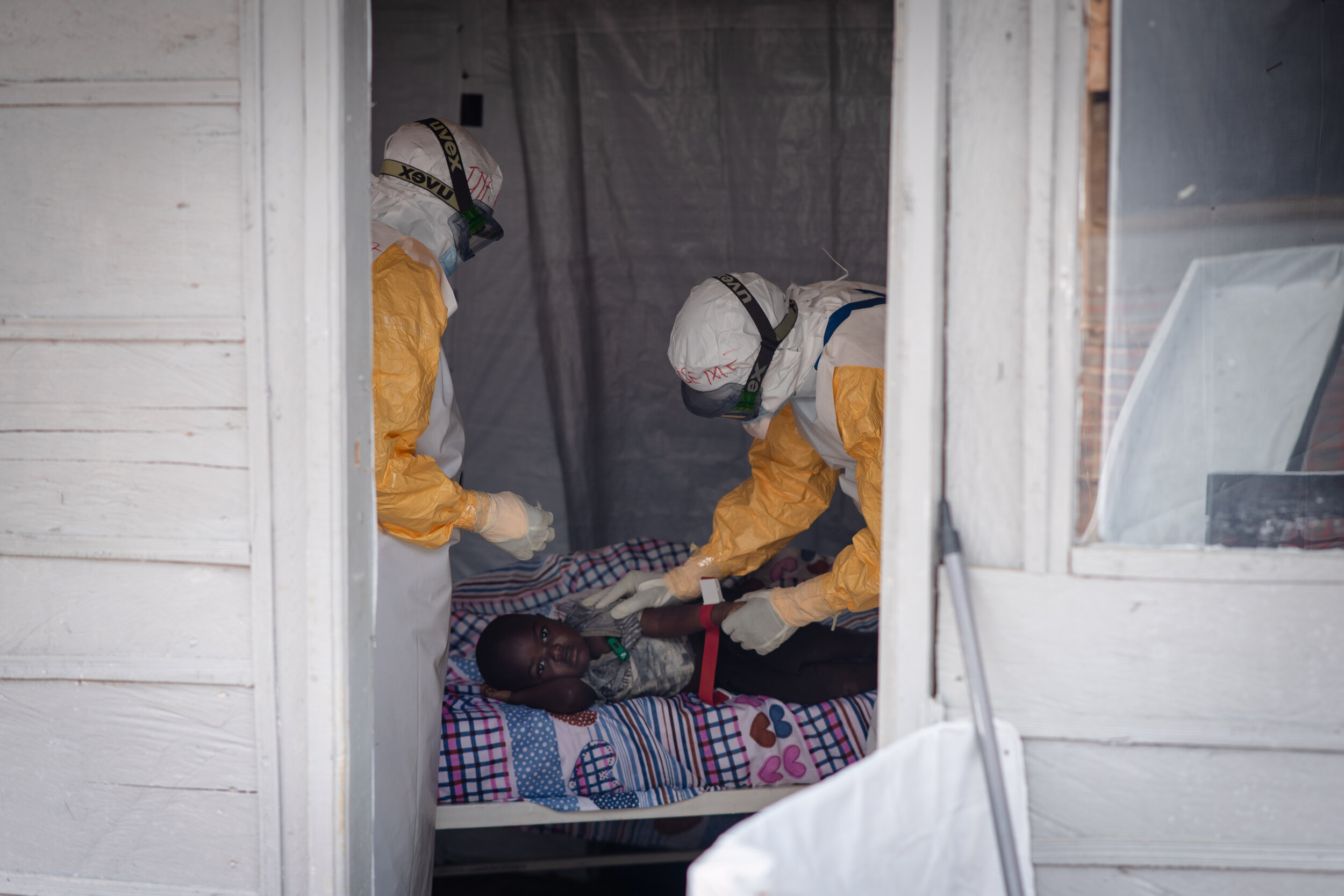
medics taking the blood sample of a child before sending it to the lab and testing it for Ebola. Vuhovi decentralized medical center, The Democratic Republic of Congo, 2019
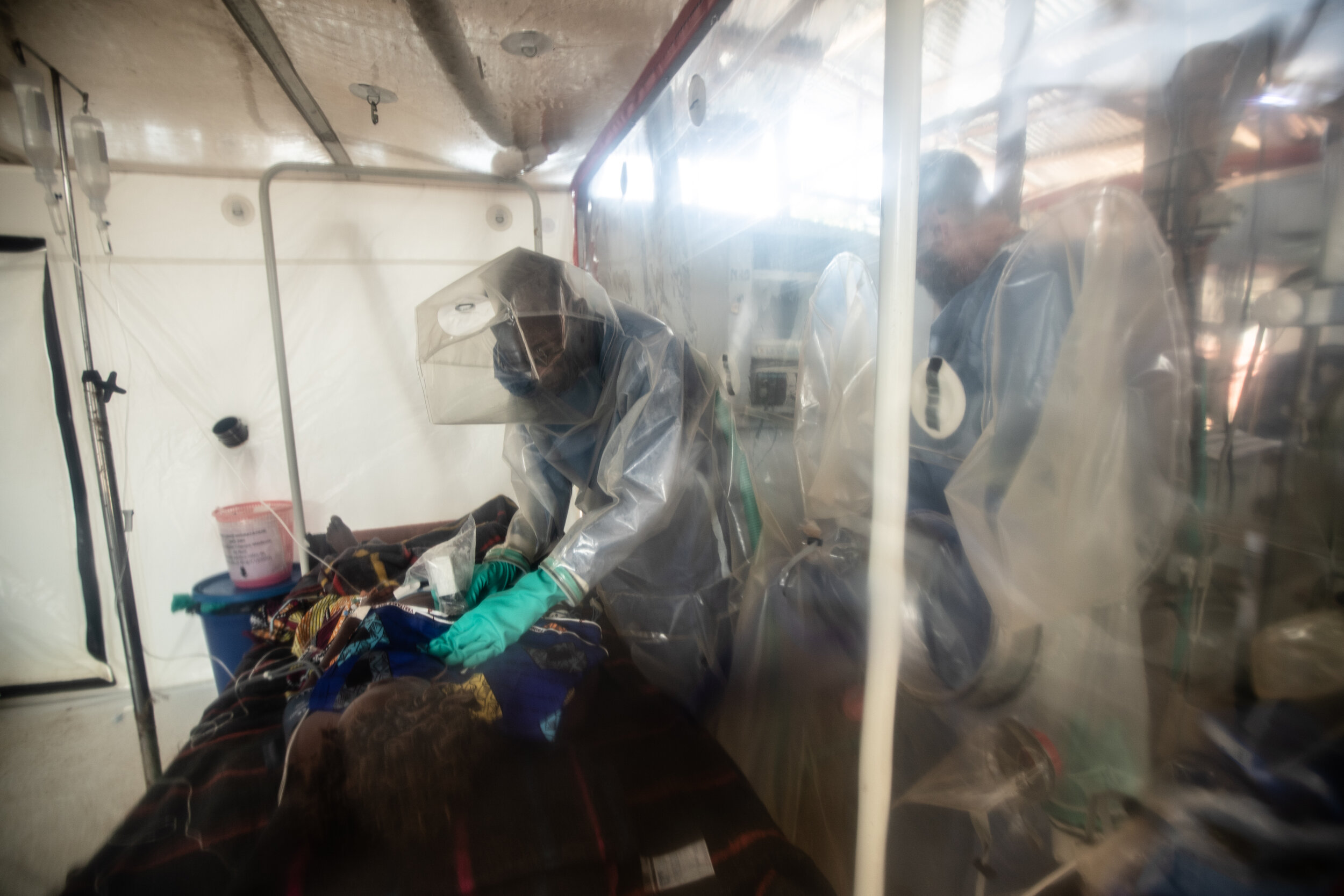
Dr. Richard Kojan, an intensive-care specialist and director of ALIMA NGO, performing a sonogram on a 53-year-old Ebola patient.
the significant contribution to improving the care for Ebola patients was brought by ALIMA through the innovation of the Biosecure Emergency Care Units for Epidemics (CUBE), which permits the continuous surveillance of the patients while being able to quickly manipulate the equipment through the transparent unit, instead of having to wear the protective suit to be able to get inside the unit and operate, the process of which can take up to 15min which makes it difficult to treat patients in case of emergency. Through the CUBE, the patient can see the face of the doctor and communicate with them, which allows for a more humane connection.
Ebola treatment center in Beni, The Democratic Republic of Congo, 2019

a patient in the recovery room, at Katwa Ebola treatment center, The Democratic Republic of Congo, 2019
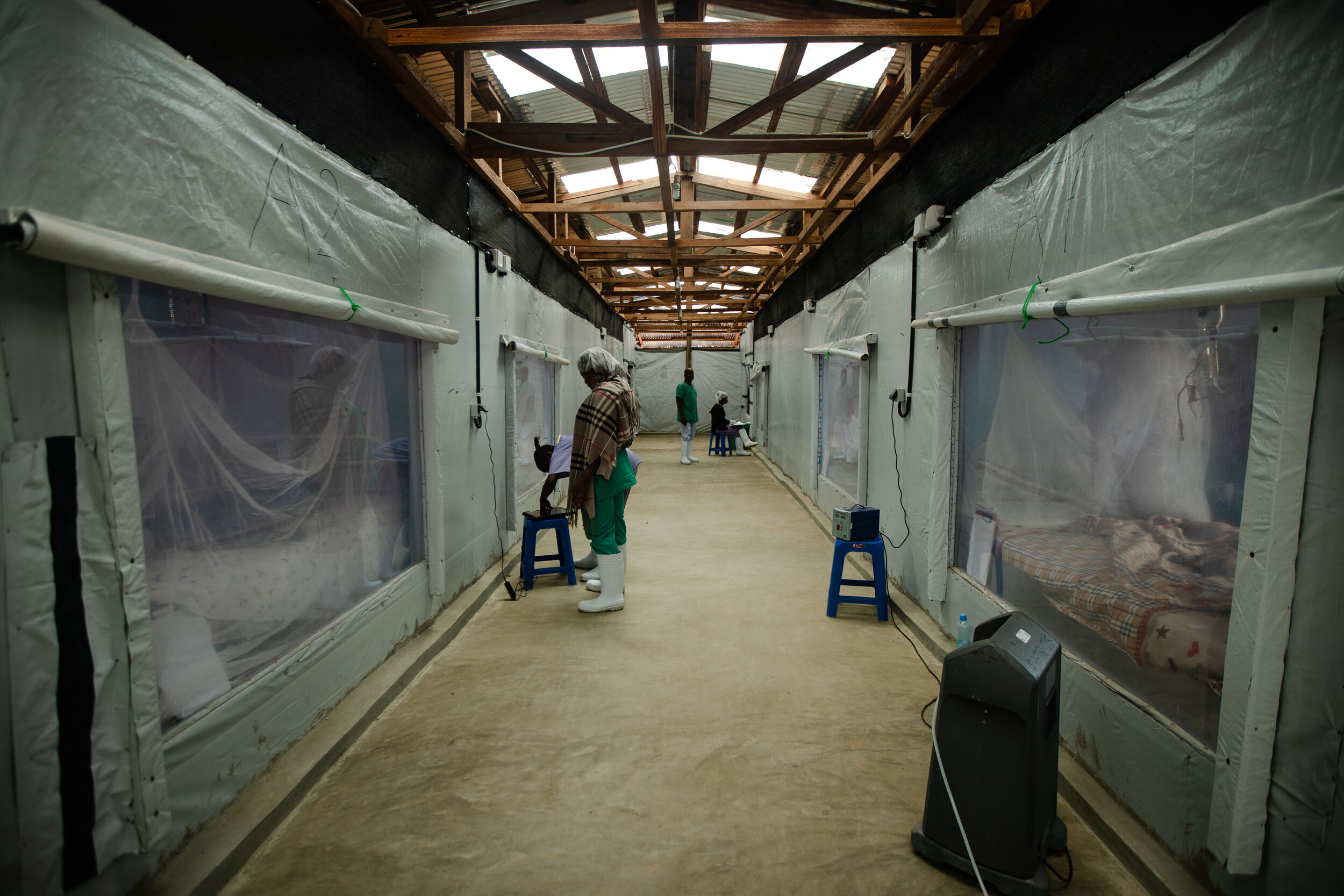
the recovery rooms, at Katwa Ebola treatment center, The Democratic Republic of Congo, 2019
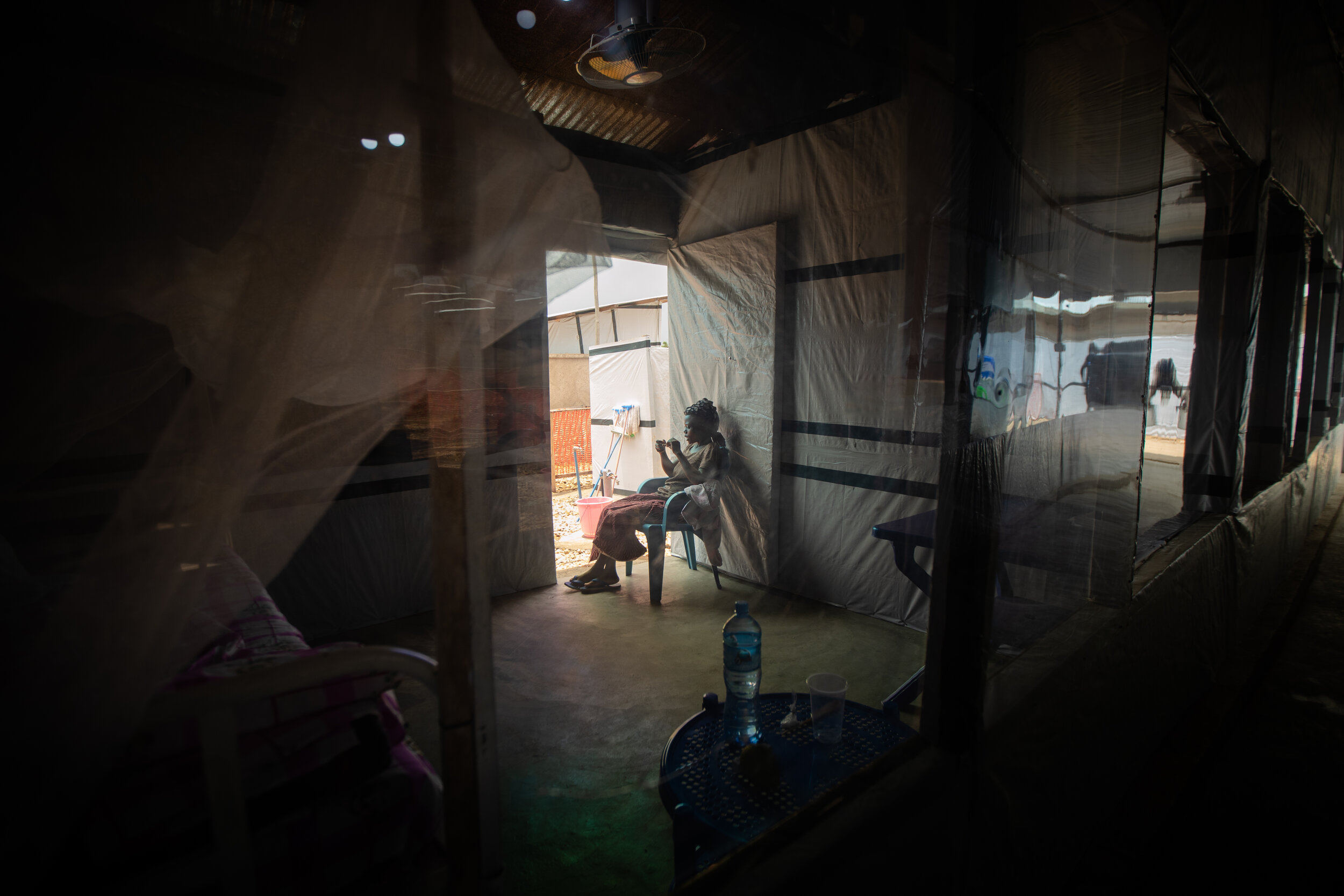
a patient in their recovery room, at Beni Ebola treatment center, The Democratic Republic of Congo, 2019
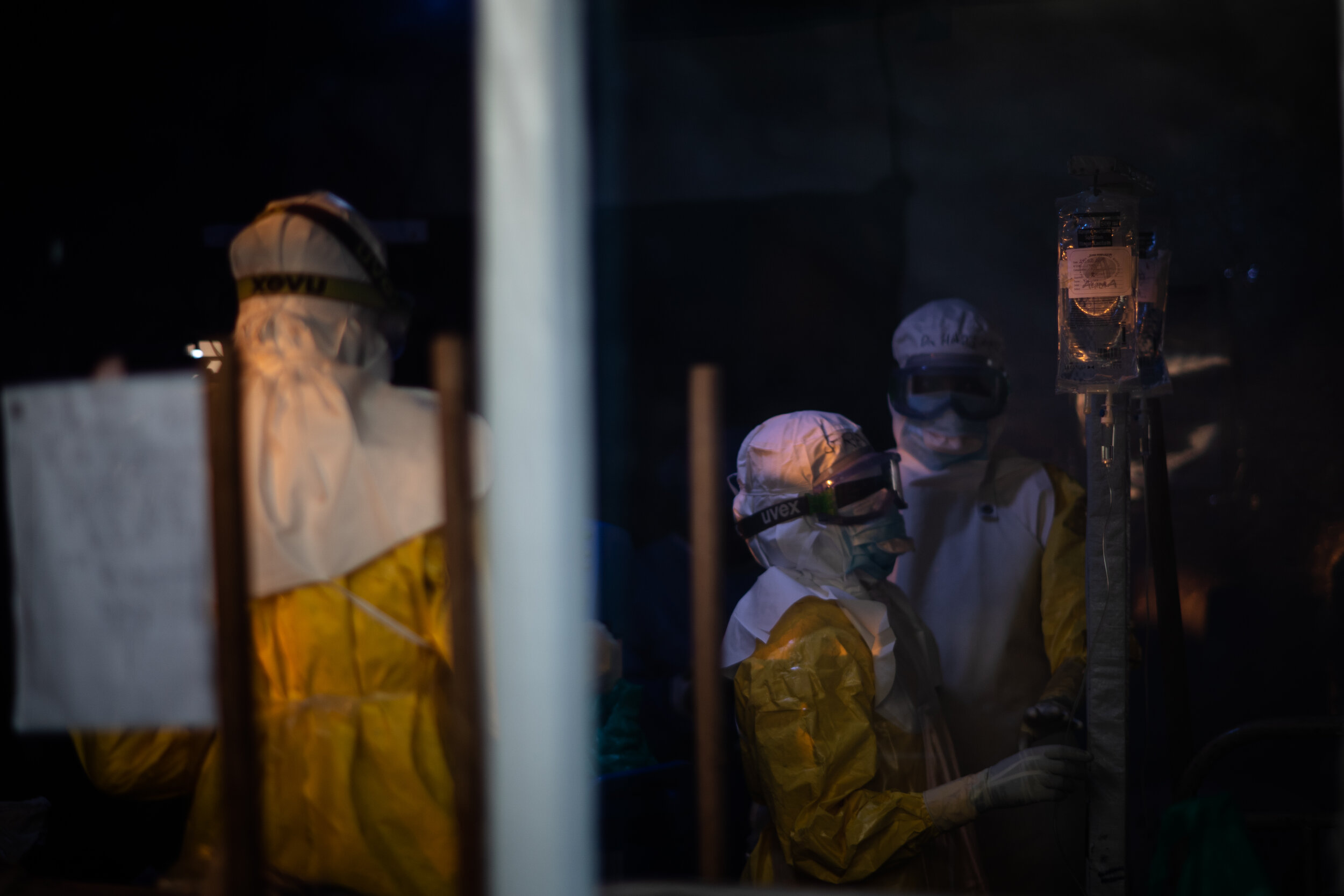
medics checking on patients at sunset, at Beni Ebola treatment center, The Democratic Republic of Congo, 2019
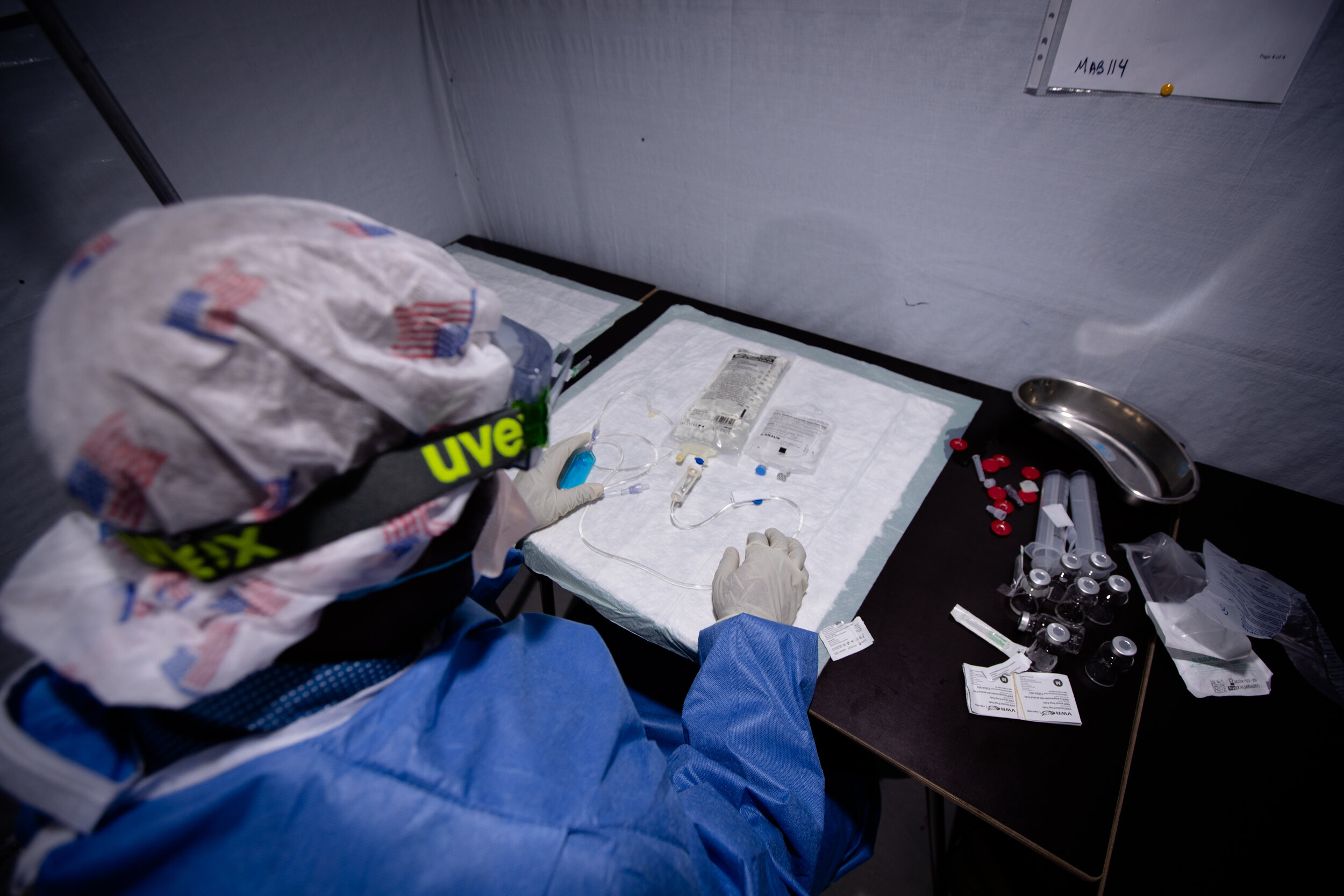
in addition to the innovation of the CUBE, ALIMA’s significant contribution to improving the care for Ebola patients was also brought through its research projects that helped identify two molecules that were proven effective in treating Ebola. Beni Ebola treatment center, The Democratic Republic of Congo, 2019
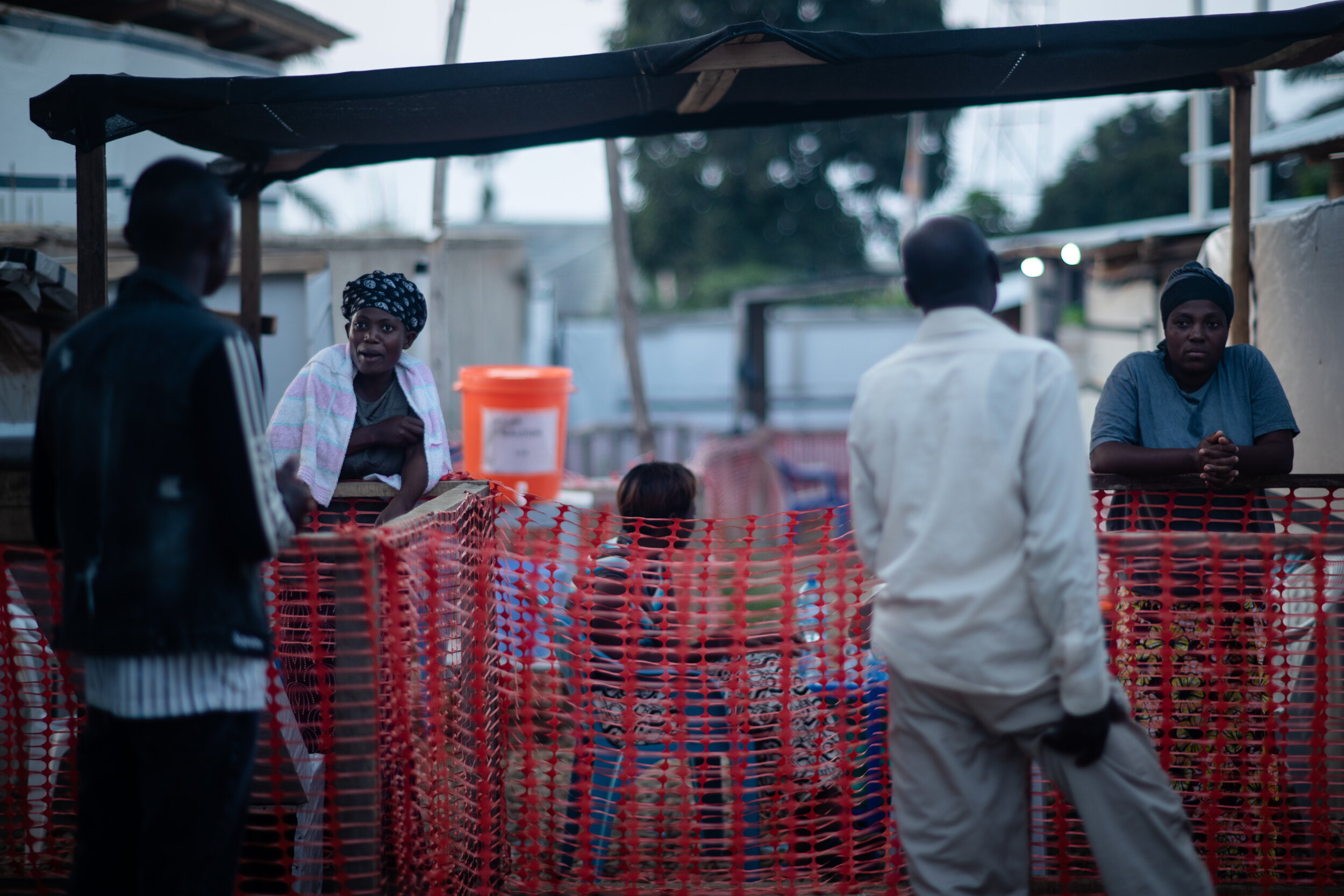
family members visit the recovering patients while standing at a safe distance, at Beni Ebola treatment center, The Democratic Republic of Congo, August 2019
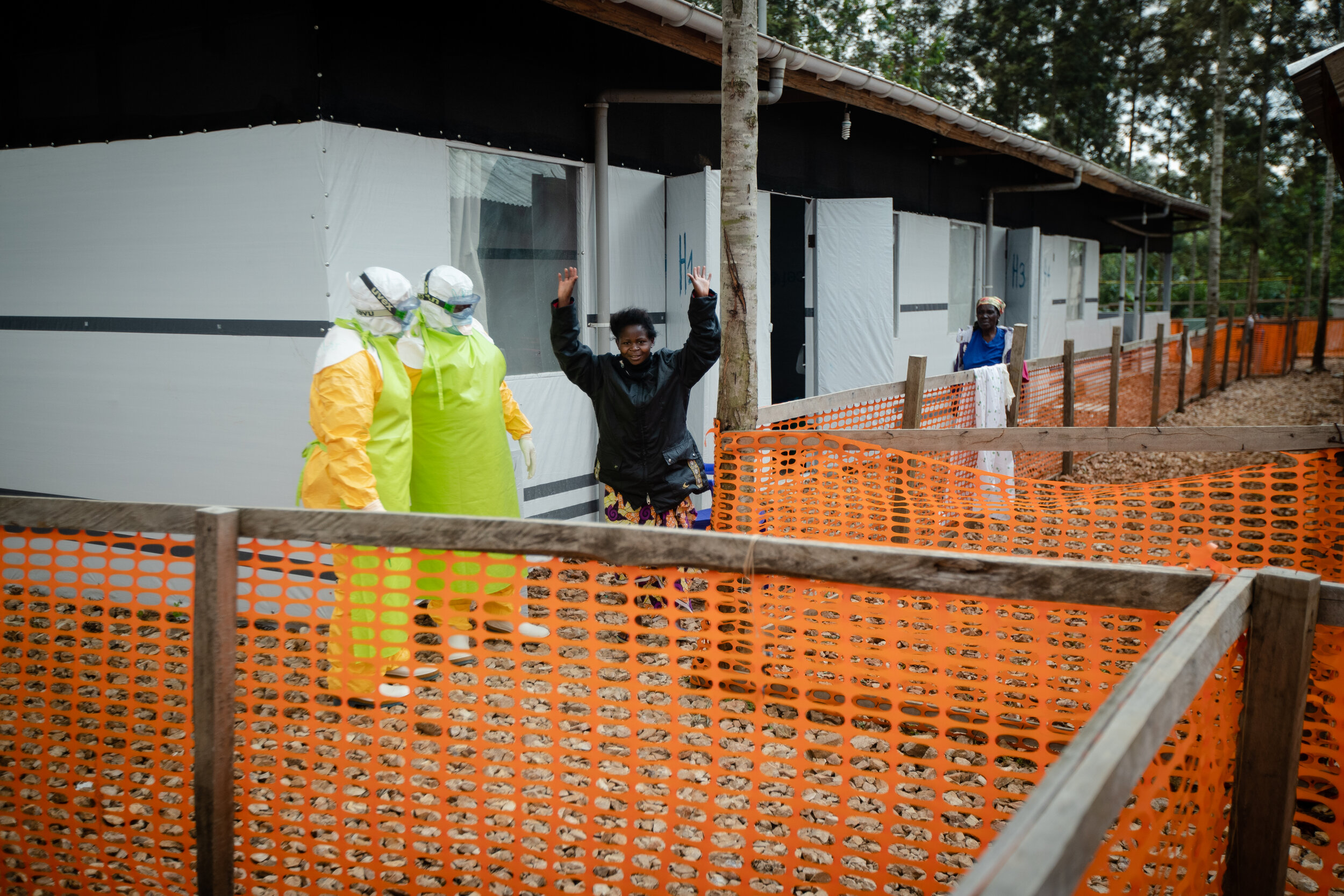
a recovering patient in the recovery zone at Katwa Ebola treatment center, The Democratic Republic of Congo, 2019

the recovery zone at Katwa Ebola treatment center, The Democratic Republic of Congo, 2019
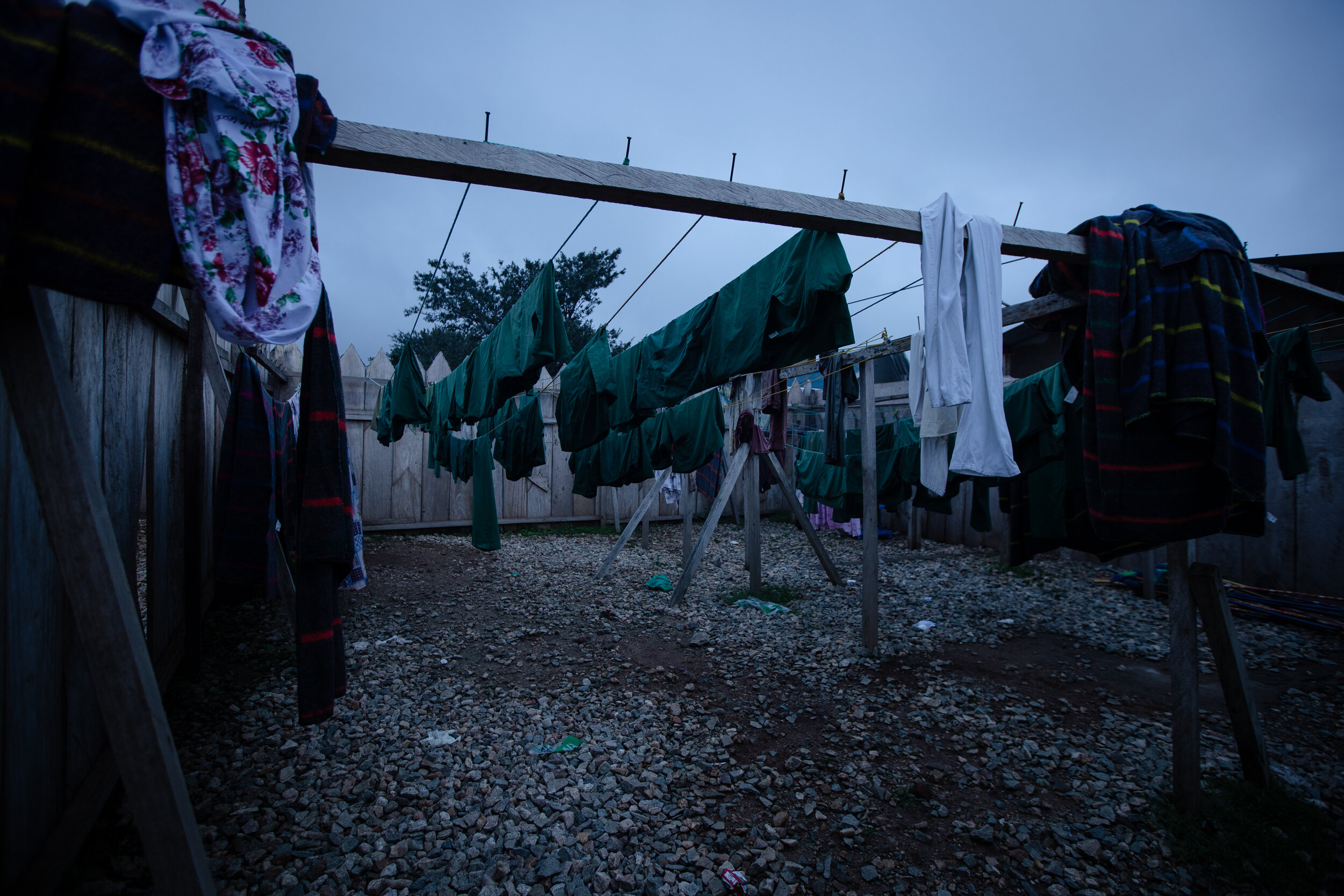
the medics’ washed clothes at dusk, after a long day at Beni Ebola treatment center, The Democratic Republic of Congo, 2019
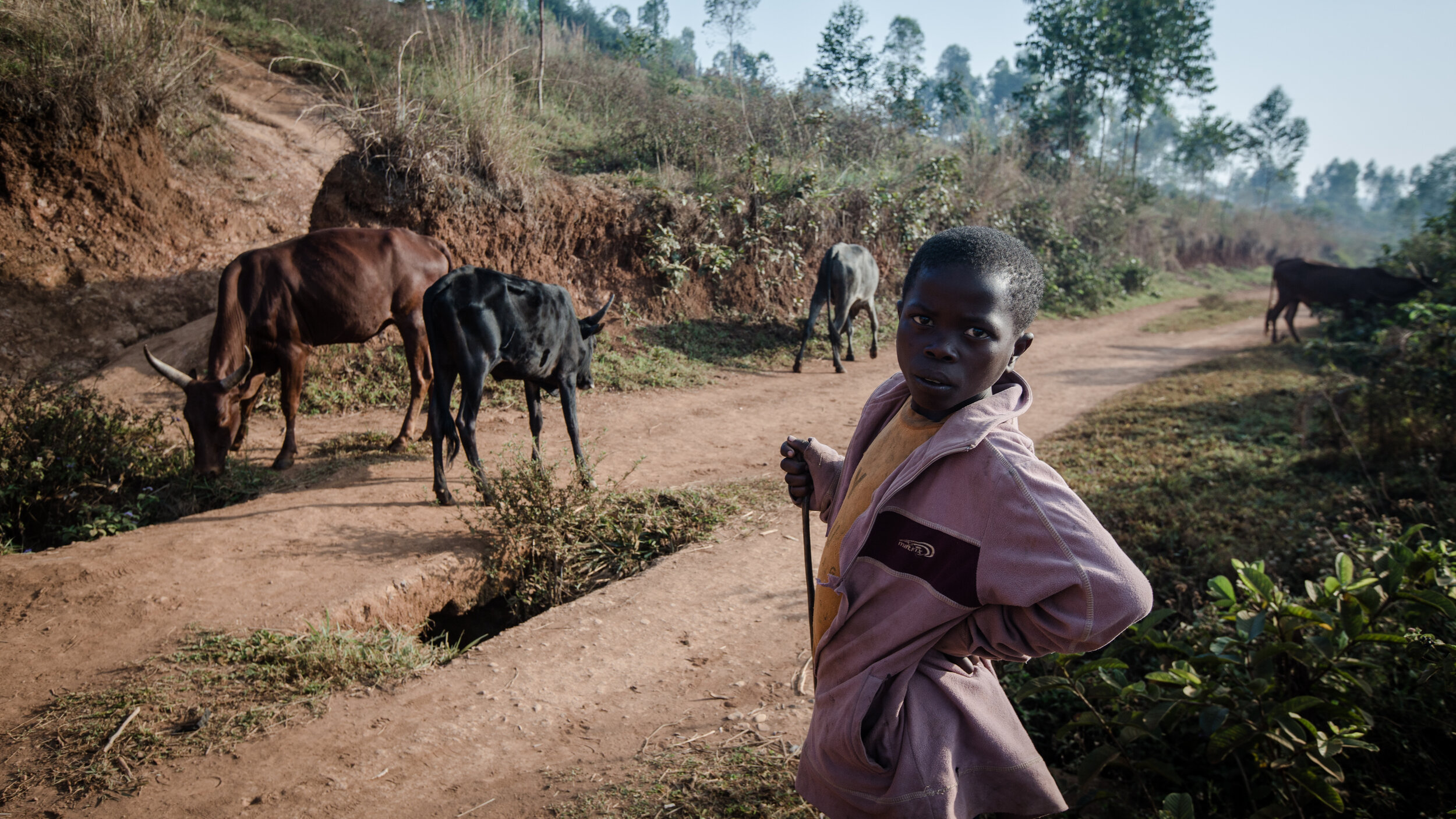
an encounter on the way up hill to Nyamurale gold mining site, on a project with TetraTech about artisanal gold mining in The Democratic Republic of Congo in August 2018
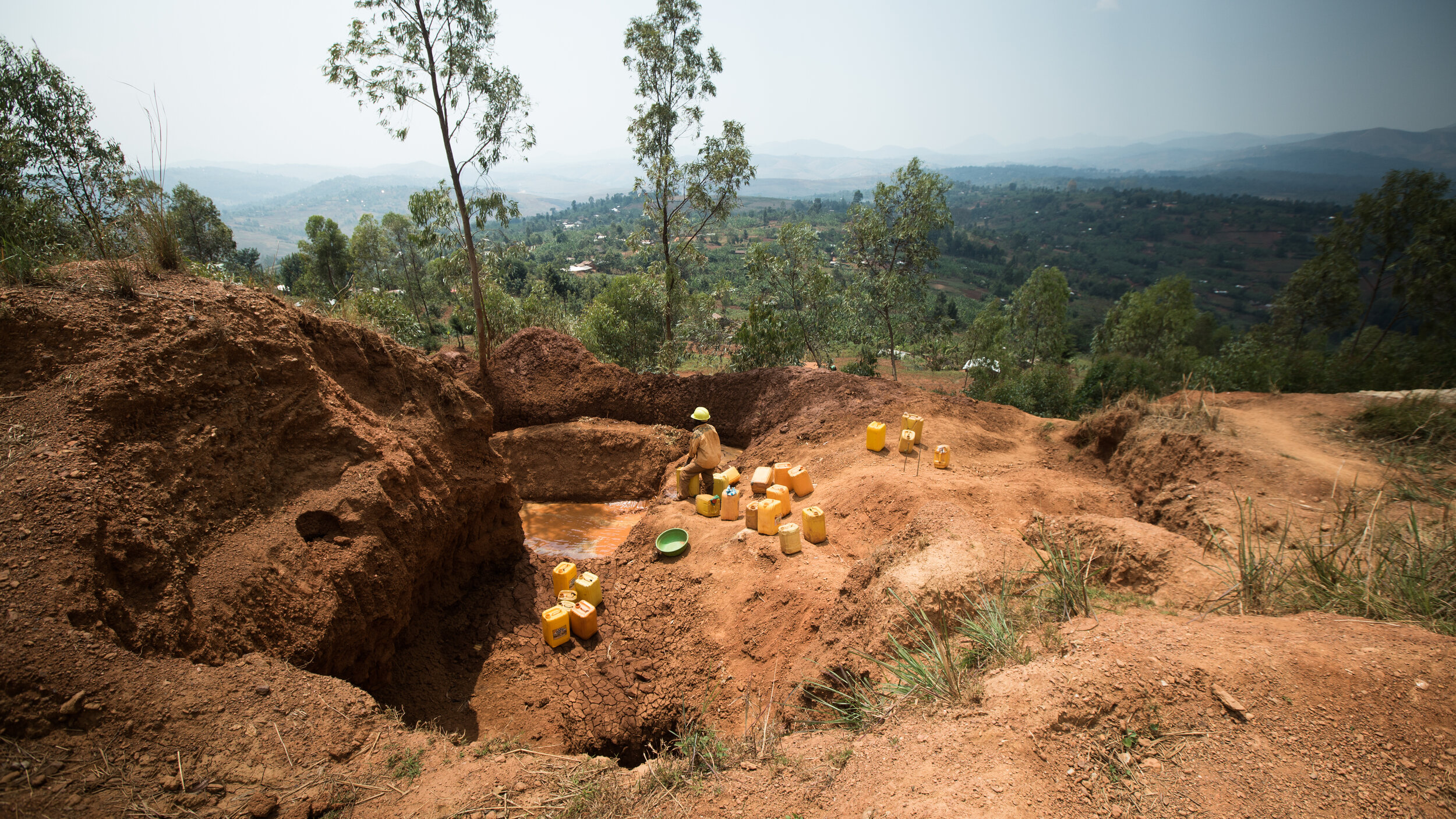
Nyamurale artisanal gold mining site’s washing station. it takes a full day of work to extract only around 0.9grams of gold from one pit in artisanal mining, the revenue of which is divided between the whole team of miners that worked on it; that is between $3 to $5 per worker a day. Nyamurale, The Democratic Republic of Congo, August 2018
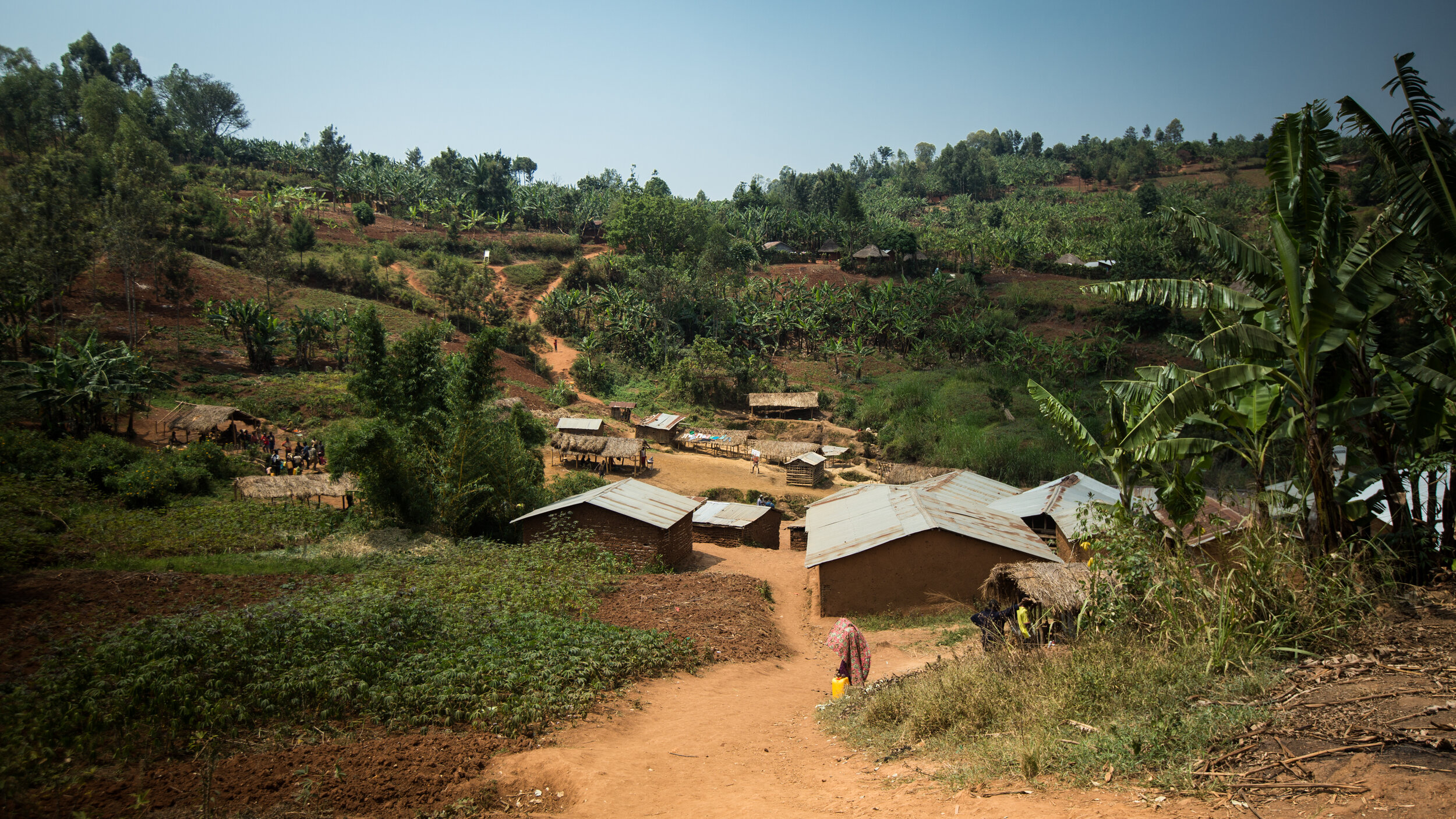
Nyamurale artisanal gold mining site, The Democratic Republic of Congo, August 2018
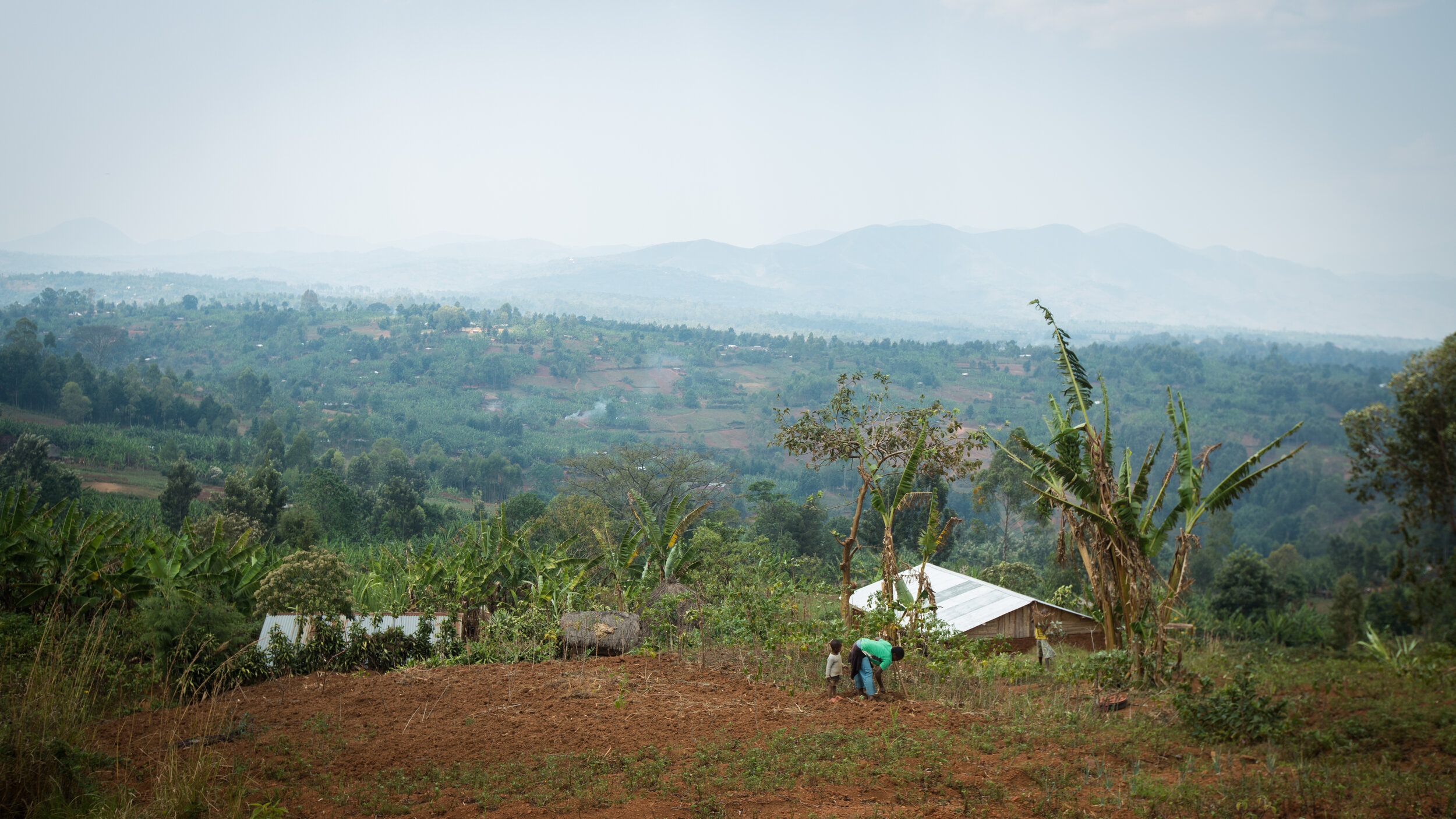
Nyamurale, The Democratic Republic of Congo, August 2018
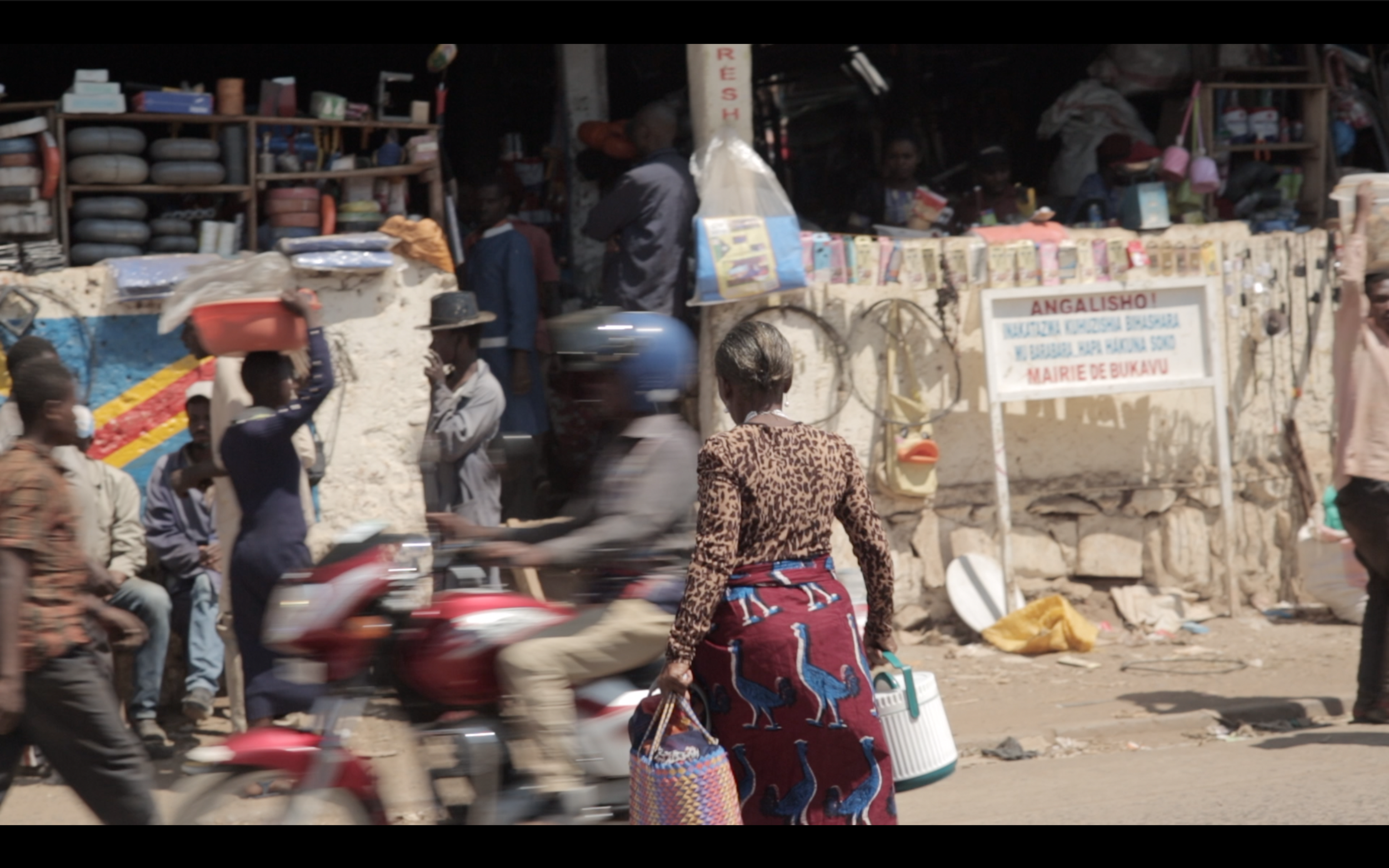
Bukavu, The Democratic Republic of Congo, August 2018
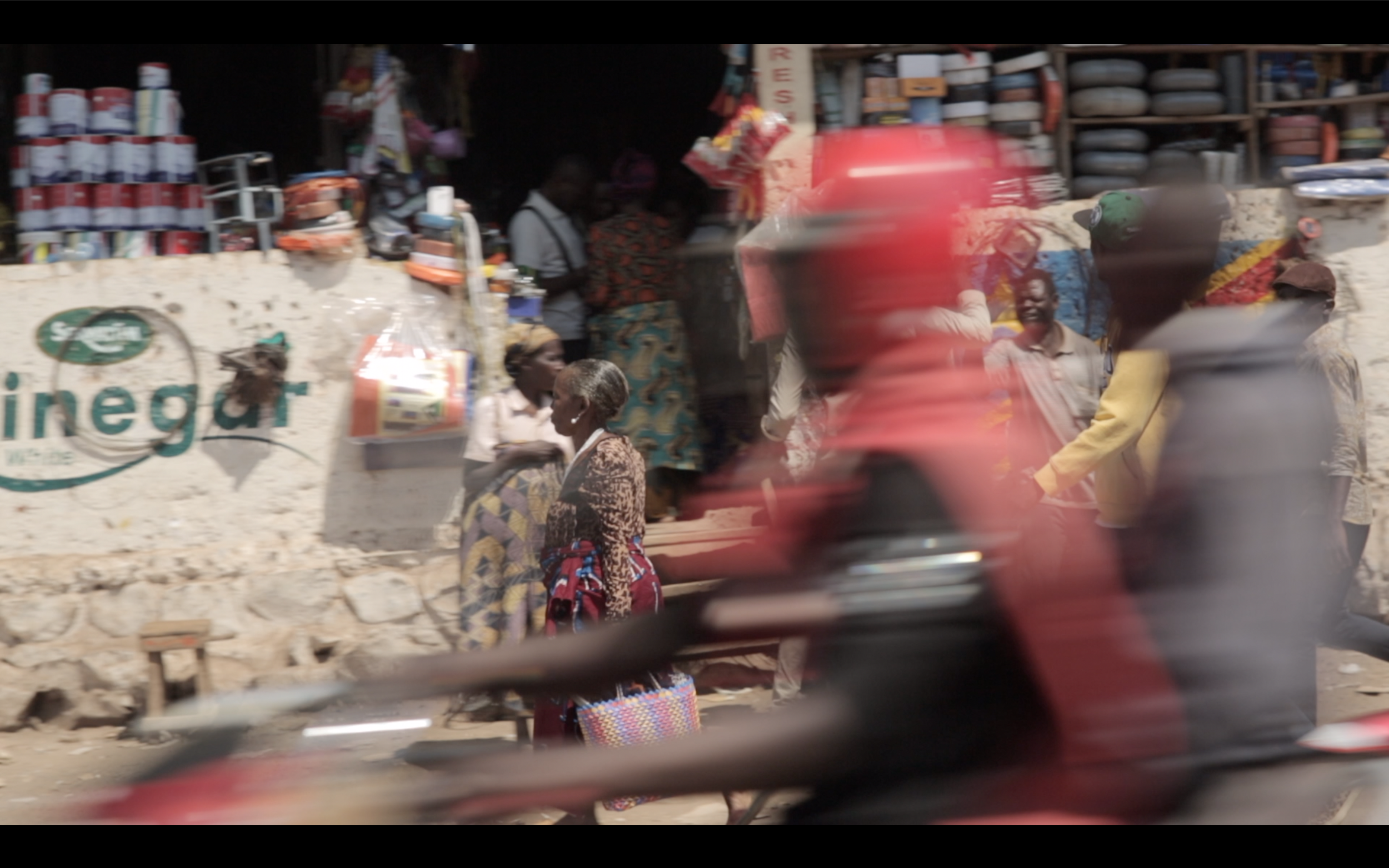
Bukavu, The Democratic Republic of Congo, August 2018






















at Katwa Ebola treatment centres where ALIMA NGO took over after two Ebola Treatment Centres belonging to Doctors Without Borders were burnt down by rebels who mistrust the government and the NGOs. Katwa, DRC, 2019
a family visit to Silvie, a 10 years old Ebola patient who lost her mother to Ebola and had been in the CUBE “the Biosecure Emergency Care Units for Epidemics” receiving her treatment. Katwa, DRC, 2019
Gabriel, Silvie’s brother, comes to visit his sister every day - she used to take care of him and their younger brother after their mother passed away. he said that he enjoyed communicating with her by talking to her and feeling the warmth of her hand on the surface of CUBE. Katwa, DRC, 2019
10 years old Silvie. because of the innovation of the CUBE, the family members can visit the patient, see them and communicate with them through the transparent surface, which makes the patient feel less isolated. Katwa Ebola treatment center, The Democratic Republic of Congo, 2019
at the Beni Ebola treatment center which, Dr. Richard Kojan, the president of ALIMA, considers to be “the school for Ebola”. there, ALIMA had installed the first treatment centres in August 2018 - that’s when the Ebola Epidemic reached that area. Beni, The Democratic Republic of Congo, 2019
medics taking the blood sample of a child before sending it to the lab and testing it for Ebola. Vuhovi decentralized medical center, The Democratic Republic of Congo, 2019
Dr. Richard Kojan, an intensive-care specialist and director of ALIMA NGO, performing a sonogram on a 53-year-old Ebola patient.
the significant contribution to improving the care for Ebola patients was brought by ALIMA through the innovation of the Biosecure Emergency Care Units for Epidemics (CUBE), which permits the continuous surveillance of the patients while being able to quickly manipulate the equipment through the transparent unit, instead of having to wear the protective suit to be able to get inside the unit and operate, the process of which can take up to 15min which makes it difficult to treat patients in case of emergency. Through the CUBE, the patient can see the face of the doctor and communicate with them, which allows for a more humane connection.
Ebola treatment center in Beni, The Democratic Republic of Congo, 2019
a patient in the recovery room, at Katwa Ebola treatment center, The Democratic Republic of Congo, 2019
the recovery rooms, at Katwa Ebola treatment center, The Democratic Republic of Congo, 2019
a patient in their recovery room, at Beni Ebola treatment center, The Democratic Republic of Congo, 2019
medics checking on patients at sunset, at Beni Ebola treatment center, The Democratic Republic of Congo, 2019
in addition to the innovation of the CUBE, ALIMA’s significant contribution to improving the care for Ebola patients was also brought through its research projects that helped identify two molecules that were proven effective in treating Ebola. Beni Ebola treatment center, The Democratic Republic of Congo, 2019
family members visit the recovering patients while standing at a safe distance, at Beni Ebola treatment center, The Democratic Republic of Congo, August 2019
a recovering patient in the recovery zone at Katwa Ebola treatment center, The Democratic Republic of Congo, 2019
the recovery zone at Katwa Ebola treatment center, The Democratic Republic of Congo, 2019
the medics’ washed clothes at dusk, after a long day at Beni Ebola treatment center, The Democratic Republic of Congo, 2019
an encounter on the way up hill to Nyamurale gold mining site, on a project with TetraTech about artisanal gold mining in The Democratic Republic of Congo in August 2018
Nyamurale artisanal gold mining site’s washing station. it takes a full day of work to extract only around 0.9grams of gold from one pit in artisanal mining, the revenue of which is divided between the whole team of miners that worked on it; that is between $3 to $5 per worker a day. Nyamurale, The Democratic Republic of Congo, August 2018
Nyamurale artisanal gold mining site, The Democratic Republic of Congo, August 2018
Nyamurale, The Democratic Republic of Congo, August 2018
Bukavu, The Democratic Republic of Congo, August 2018
Bukavu, The Democratic Republic of Congo, August 2018